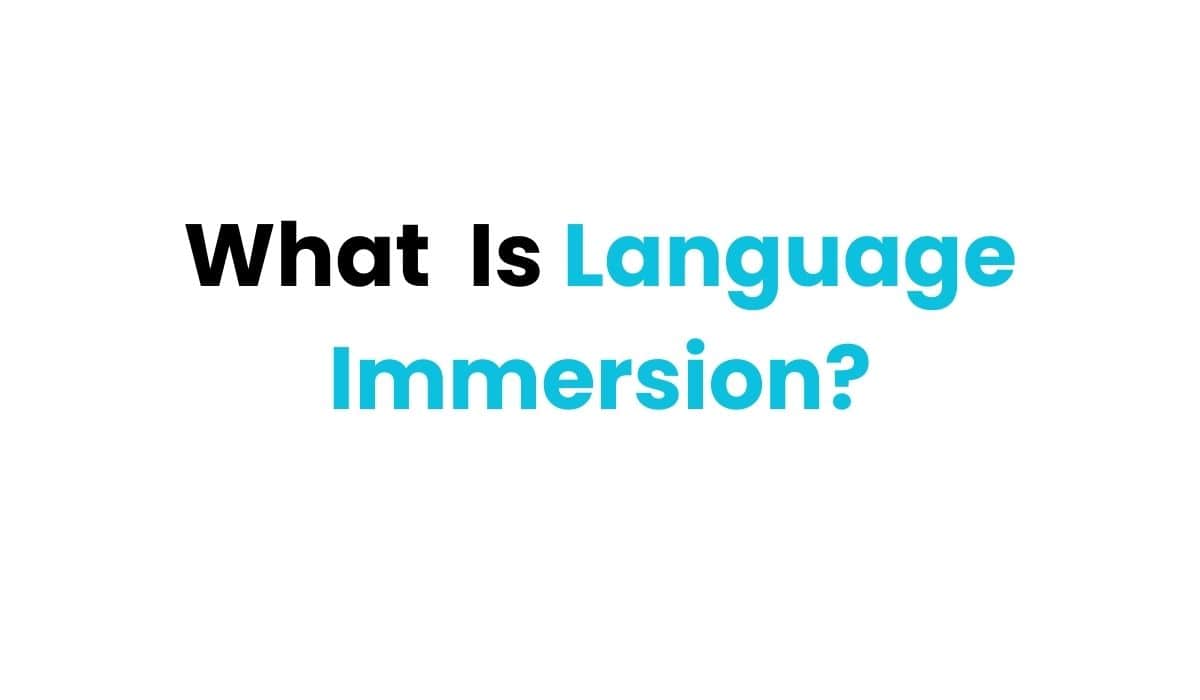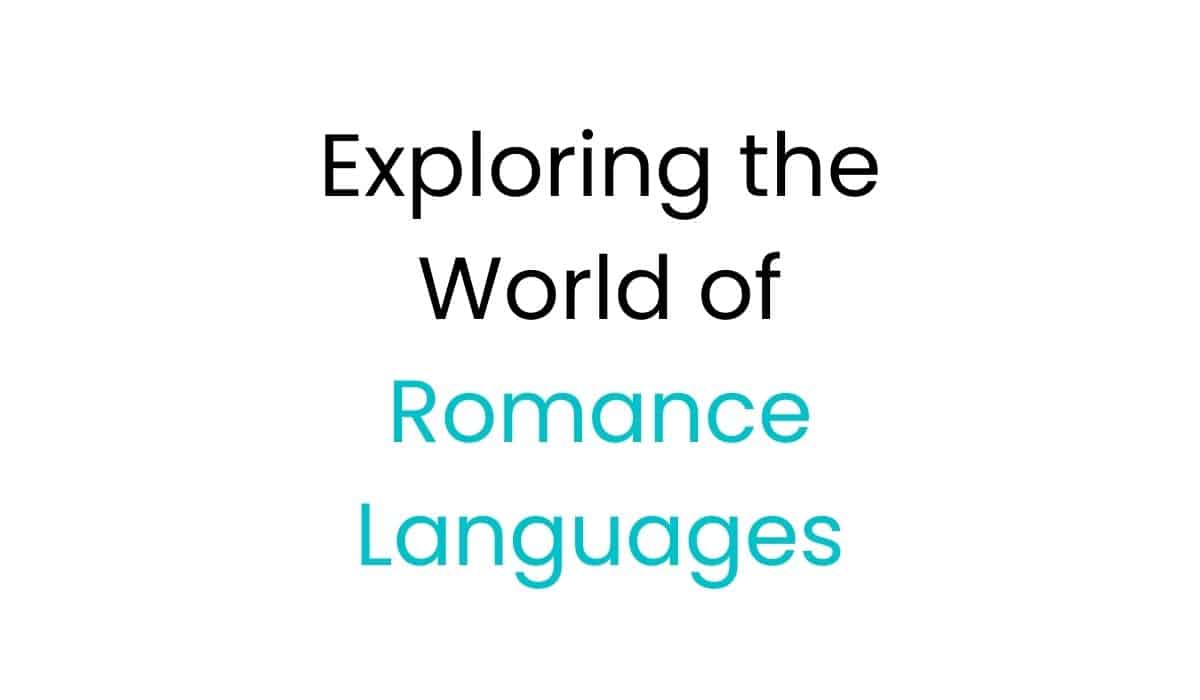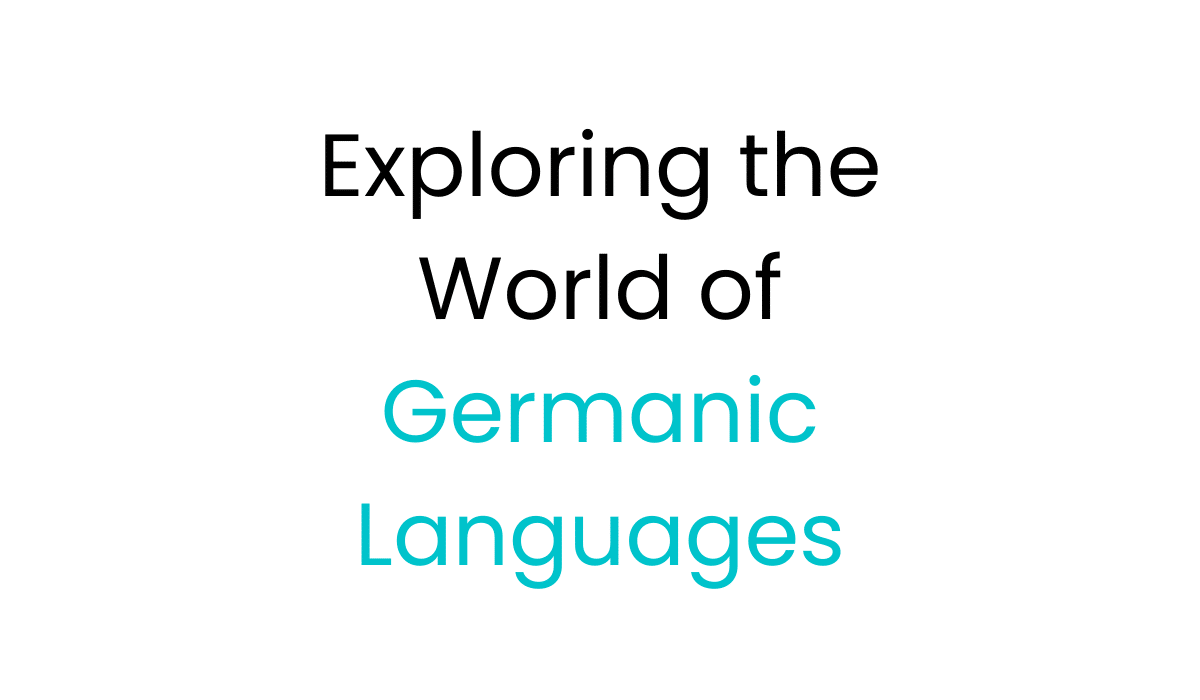Language immersion is a strong way to learn a new language. It lets learners fully connect with the language and culture. By living in the city, they can use their language skills in real situations. This helps them improve their speaking and listening skills and understand the language’s small details.
This article will look at how language immersion changes learning. It will show the big benefits of this approach, like better thinking skills, cultural understanding, and language skills.

Key Takeaways
- Language immersion programs offer unparalleled opportunities for developing fluency and cultural understanding.
- Immersive language learning goes beyond traditional classroom methods, allowing learners to practice in real-world settings and gain practical communication skills.
- Exposure to diverse languages and customs can cultivate greater empathy, respect, and appreciation for cultural differences.
- Immersion learning can lead to cognitive enhancements, including improved problem-solving skills and higher levels of creativity.
- Key Takeaways
- Language Immersion: Unlocking Cultural Understanding
- Fun Ways Of Linguistic Immersion
- Travel: The Catalyst for Language Proficiency
- Language Immersion: The Key to Cognitive Growth
- Multilingualism: A Pathway to Holistic Development
- Immersive Language Environments: Beyond the Classroom
- Language Homestays: An Authentic Immersion Experience
- Cross-Cultural Adaptation: Embracing Diversity
- Study Abroad Programs: A Launchpad for Language Mastery
- Native Speaker Interactions: The Key to Authentic Learning
- Multilingual Learning: Unlocking Cognitive Benefits
- Conclusion
- FAQ
- What is the meaning of language immersion?
- What are the benefits of language immersion?
- How does travel enhance language proficiency and cultural understanding?
- How does language immersion contribute to cognitive growth?
- What are the advantages of language immersion for children?
- Where can language immersion occur beyond the classroom?
- What is the significance of language homestays for language learners?
- How does language immersion facilitate cross-cultural adaptation?
- What are the benefits of studying abroad for language learners?
- Why is interacting with native speakers important for language learning?
- What are the cognitive benefits of multilingual learning?
Language Immersion: Unlocking Cultural Understanding
Language immersion wraps learners in the target language at every turn. This method, known as “full linguistic exposure,” boosts language skills and deepens cultural understanding. It’s more than just learning words; it’s about connecting with a culture.
Immersion Learning: A Gateway to Fluency
Studies show immersion learning leads to better fluency, comprehension, and cultural empathy. By diving into the language and culture, learners gain a deeper understanding. This approach changes how they see the world.
- Full Immersion Programs surround learners with the language and culture all the time. They use the target language for all interactions, inside and outside class. This method speeds up learning by giving learners lots of practice.
- Partial Immersion Programs mix time between the target language and the learner’s native language. This is good for beginners who need some support before fully switching to the new language.
- Language Camps and Intensive Workshops provide a quick, intense language experience. They’re great for those wanting a fast improvement in their language skills.
The Transformative Experience of Cultural Integration
Immersion learning puts language in real-life situations. It exposes learners to the language’s nuances, like pronunciation and cultural subtleties, beyond what’s in textbooks. This method encourages trying new things without fear, helping learners improve faster. Cultural immersion also helps break down stereotypes, leading to a more open-minded view and real connections across cultures.
| Program Type | Description | Ideal for |
|---|---|---|
| Full Immersion | Complete submersion into the target language and culture | Advanced learners seeking maximum exposure and practice |
| Partial Immersion | Split time between target language and native language | Beginners who need initial support before full transition |
| Language Camps/Workshops | Short-term intensive language exposure | Learners seeking a rapid boost in language skills |
Fun Ways Of Linguistic Immersion
Immersion Through Watching Shows
Watching shows in your target language is an enjoyable and effective method of language immersion. This approach exposes learners to natural, conversational language use in context, helping them pick up colloquialisms, slang, and cultural nuances that might not be covered in traditional language courses.
Start with shows that have subtitles in your native language, then progress to subtitles in the target language, and finally to watching without subtitles. This gradual approach helps build listening comprehension skills. Choose a variety of genres – from sitcoms and dramas to documentaries and news programs – to expose yourself to different vocabulary sets and speaking styles.
Streaming platforms often offer a wide selection of international content, making it easier than ever to access shows in many languages. Regular viewing can improve your listening skills, expand your vocabulary, and help you understand the rhythm and intonation of the language. Moreover, it provides cultural context, giving insights into the customs, humor, and social norms of the countries where the language is spoken.
Benefits of Doing Activities in Your Target Language
Engaging in everyday activities in your target language creates a practical, immersive experience that can significantly accelerate language learning. This approach goes beyond traditional studying methods by integrating the language into your daily life.
Some activities you can do in your target language include:
- Reading books, newspapers, or online articles
- Listening to podcasts or radio shows
- Writing a journal or blog
- Cooking using recipes in the target language
- Playing video games with the language settings changed
- Participating in online forums or social media discussions
The benefits of this immersive approach are numerous:
- Contextual learning: You learn vocabulary and grammar structures in real-life contexts, making them more memorable and easier to apply.
- Increased exposure: Regular engagement with the language increases your overall exposure, which is crucial for language acquisition.
- Improved fluency: By using the language in various contexts, you become more comfortable and fluent in different types of communication.
- Cultural understanding: Many activities provide insights into the culture associated with the language, enhancing your overall comprehension.
- Motivation boost: Incorporating the language into enjoyable activities makes learning more fun and sustainable, increasing your motivation to continue.
- Practical skill development: You develop practical language skills that are immediately applicable in real-life situations.
By consistently incorporating these activities into your routine, you create a personal immersion environment that can dramatically improve your language skills over time.
Language Exchange Partnerships: Bridging Cultures
Language exchange partnerships involve connecting with native speakers of your target language who are interested in learning your native language. This method offers a unique opportunity for mutual learning and cultural exchange. Participants can practice speaking and listening in a natural, conversational setting while also gaining insights into the culture associated with the language. These partnerships can be formed through online platforms, local meetups, or even during travel. They provide a supportive environment for language learners to improve their skills, build confidence, and forge international friendships.
Travel: The Catalyst for Language Proficiency
Traveling to a new place is a great way to improve your language skills and understand different cultures. By joining language study abroad, language immersion programs, and language learning through travel, you can break through language barriers. This helps you make connections that are hard to make in school.
When you use your language skills in real situations, you learn it’s okay to make mistakes. You don’t have to speak perfectly to be understood. Travel boosts your language skills and helps you see the world from different perspectives. It makes you more aware of other cultures and helps you understand people better.
Transcending Language Barriers through Globetrotting
Traveling and immersing yourself in a new culture can make you 47% better at a language. 83% of travelers say they understand cultural differences better after immersing themselves in a new culture. And, they make 69% more connections with people from different cultures.
A study in 2016 found that traveling helps young people grow personally and do better in school. It also makes them more open to learning and more independent. They become more curious, confident, and have higher self-esteem.
“Travel is fatal to prejudice, bigotry, and narrow-mindedness, and many of our people need it sorely on these accounts. Broad, wholesome, charitable views of men and things cannot be acquired by vegetating in one little corner of the earth all one’s lifetime.” – Mark Twain
Money can be a problem for schools to send students on trips. But, the impact of travel on people, like authors Toni Morrison and Ernest Hemingway, shows how important it is. It helps shape who we are and what we can achieve.
Language Immersion: The Key to Cognitive Growth
Language immersion is more than just learning a new language. It opens doors to cognitive growth. Studies show that bilingual people use their brains more efficiently than those who speak only one language. This happens when they switch between languages in school and everyday life.
This constant switching makes bilingual kids better at handling language and ignoring distractions. It also helps their brain control system grow stronger. This is key for learning and thinking well throughout life.
Bilingual kids are great at solving problems that have different clues. They are better at focusing and controlling their actions. This shows they have an edge in attention and decision-making.
Learning a second language does more than just improve language skills. Bilingual people often do better in thinking creatively, recognizing patterns, and solving problems. They also have stronger memory than those who speak only one language.
Being immersed in different languages also helps with understanding different cultures and feelings. It makes communication better by letting people see things from another perspective. This makes it easier to get along with people from other cultures.
Even though many studies show the benefits of learning a second language, the U.S. is behind in this area. Most states and Washington D.C. say they don’t have enough teachers for language classes. There are also not enough programs for early language learning, especially in elementary schools.
As more people need to speak multiple languages, we must see the big benefits of language immersion. By focusing on early language learning and immersive education, we can help future generations grow their minds. This will make our society more connected, understanding, and adaptable.
Multilingualism: A Pathway to Holistic Development
Learning multiple languages offers more than just language skills. Kids in immersion programs show great skills in reading, math, arts, and sports. This is because learning many languages helps grow the brain in many ways.
The Power of Neuroplasticity in Early Childhood
Early childhood is the best time to use the brain’s flexibility. Immersion in languages boosts the brain’s ability to switch between tasks and focus. This helps kids do well in school and prepares them for a world that’s more connected.
Enhancing Executive Control through Language Learning
- Studies show bilingual kids have better executive function. This means they pay attention better, control impulses, and switch between tasks easily.
- Knowing many languages helps immigrants and refugees in many areas. It boosts their thinking, social, economic, and educational skills.
- Using the home language in class helps adult learners with basic English skills do better.
Learning many languages early on is key to growing well-rounded. It brings big cognitive benefits and helps kids succeed in a world that’s diverse and global.
Immersive Language Environments: Beyond the Classroom
Learning a language is now more than just sitting in a classroom. New ways have opened up a world of immersive experiences that go beyond the usual. These experiences help learners get a deeper understanding of languages and cultures.
Immerse is a cutting-edge platform that mixes language learning with virtual reality. It works with over 25 universities to improve how we learn languages in immersive ways. Learners get to join live classes, chat with others, practice with AI, and play social games.
“Language immersion is widely regarded as the best way to learn a language quickly, fluently, and effectively.”
Immersion learning, whether in VR or real life, has many benefits. Adults learning a language this way can become fluent quickly, doing better than those in traditional classes.
There are many ways to immerse yourself in a language, like walking around new areas, going to cultural events, or eating ethnic food. These activities are great for practicing your language skills and understanding the culture better.
The secret to learning a language well is creating environments that fully engage your senses and actions. By doing this, learners feel like they are really there, which helps them learn and speak better.
Language Homestays: An Authentic Immersion Experience
Language homestays give learners a chance to dive deep into the target language and culture. Living with a host family means daily interactions and activities. This helps learners understand the language and its culture better.
This setting helps learners get fluent in the language and understand the culture. They learn to use the language in real life, in a supportive place.
Fostering Linguistic Fluency in a Family Setting
Host families usually don’t speak English, making it a great way to learn the language. They are chosen carefully to ensure a safe and meaningful stay for students. Everyone agrees on the rules and what to do in emergencies before the stay starts.
- Most host families don’t speak English, providing an immersive language learning environment.
- Families and homes are evaluated based on specific criteria for safety and meaningful experiences.
- Host families are carefully screened and sign a contract outlining rules and expectations.
- Emergency procedures and contacts are provided to handle any unforeseen situations during the homestay.
Students can choose to stay with another student or alone if they want. It’s a good idea to bring a small gift for your host family. Keeping in touch with them after the trip is also encouraged.
This experience is often seen as a key part of learning a language. It’s a memorable part of the journey.
“The language homestay was the highlight of my trip. Living with a local family and immersing myself in their daily life was an incredibly valuable experience that allowed me to truly understand the culture and language.”
Language homestays are for all ages, from kids to adults. They offer a personal way to learn a language. With many host families from different backgrounds, everyone gets a safe and enriching experience.
Cross-Cultural Adaptation: Embracing Diversity
Learning a new language is more than just words; it’s about diving into a new culture. Through this, learners can challenge their own views and grow more open and caring. This cross-cultural adaptation is key for talking well with people from other backgrounds. It helps build strong connections and a deeper respect for our differences and similarities.
In an international school in China, teachers face the challenge of connecting with students from various cultures. They must bridge language gaps to help students learn. This setting is perfect for cross-cultural learning and understanding. Working with Chinese teachers also shares teaching methods, broadening students’ views and making them more culturally aware.
In an American preschool, kids from different languages like Spanish and English come together. Talking in multilingual conversations helps them learn new languages. Showing cultural items helps them feel connected to their roots. Activities like reading books and watching videos from around the world teach empathy and cultural smarts. This prepares them for getting along with people from other cultures later on.
| Benefits of Cultural Understanding | Benefits of Cross-Cultural Communication Skills |
|---|---|
| Empathy Development: Learning about different cultures makes kids more empathetic and open-minded. Communication Enhancement: Being exposed to various cultures helps kids talk better with people from other backgrounds. Cultural Intelligence: Learning to communicate across cultures makes kids better at working with people from around the world. | Empathy Enhancement: Kids who know about different cultures are more empathetic and can see things from others’ viewpoints. Effective Collaboration: Being good at talking across cultures helps kids work well in groups with people from different backgrounds. Cognitive Flexibility: Learning about various cultures makes kids more creative and better at solving problems. Global Opportunities: Knowing how to communicate across cultures opens doors to studying abroad or working in teams from around the world. |
By embracing the diversity of languages and cultures, programs and schools can help learners understand and value human diversity more deeply. This prepares them to succeed in a world where we’re all connected.
Study Abroad Programs: A Launchpad for Language Mastery
Going on a study abroad trip is a great chance for language learners to dive deep into the language and culture. By living and studying in another country, students can boost their language skills and cultural knowledge. Immersive language learning experiences are key to this growth.
These programs let learners use their language skills in everyday situations. This helps them get better at speaking, understanding, and feeling connected to the culture. Students get to learn through both classes and real-life experiences, speeding up their language skills. They also learn more about the host country’s ways of life.
Maximizing Linguistic Growth through Immersive Experiences
Many studies show how powerful language immersion through travel and study abroad programs are. These programs help students learn a language in a real setting where it’s spoken. By mixing language learning with exploring the culture, students reach a higher level of language skill and cultural understanding.
Outside the classroom, study abroad programs offer many chances to talk and connect in the target language. This kind of real-world practice is key for language learning. It lets students use their skills in everyday conversations.
Native Speaker Interactions: The Key to Authentic Learning
Talking with native speakers is key to learning a language for real. It helps learners pick up on things like slang, idioms, and cultural references. These chats make language skills better and help learners understand the culture. This leads to better communication and connections with native speakers.
Studies show that real language content, like audio or video, makes learning more engaging and fun. Teachers use role-play and immersion to give learners real experiences. This approach helps learners stay motivated and remember more.
Language exchange, media immersion, or working with a tutor are great ways to learn a language. The secret is constant native speaker interactions and being exposed to the target language in real situations. These experiences help learners understand the language and culture deeply.
Multilingual Learning: Unlocking Cognitive Benefits
Learning multiple languages through immersion brings many cognitive benefits for people of all ages. Bilingual and multilingual people show better executive control. This means they handle cognitive tasks more efficiently and with less effort.
Switching between languages strengthens the brain’s system for managing cognitive tasks. Starting multilingual learning early takes advantage of the brain’s flexibility. It leads to lasting cognitive benefits in school and work.
- Bilingual individuals excel in tasks that require problem-solving, creativity, and pattern recognition compared to monolingual peers.
- Bilingual people better understand math concepts and word problems than non-bilingual individuals.
- Bilinguals often have better working memory than monolinguals.
| Cognitive Benefit | Advantage of Bilingualism |
|---|---|
| Focus and Attention | Bilinguals exhibit more attention and focus, enabling them to concentrate better and filter out distractions. |
| Cognitive Reserve | Bilingualism contributes to increased cognitive reserve, enhancing the brain’s ability to improvise and find alternative ways of functioning when faced with challenges. |
| Executive Function | Bilingual individuals often show enhanced executive function and better planning and organizational skills. |
| Mental Agility | The ability to adapt and multitask, enhanced by bilingualism, can lead to greater career opportunities. |
Conclusion
Language immersion changes how we see the world, making us understand cultures better and grow mentally. It lets us practice languages, make real connections, and get a full view of a culture. This experience is key to becoming a global citizen in today’s connected world.
Studies show that language immersion boosts language skills, brain power, and school performance. Students in these programs get better at solving problems, reading, and adjusting to new situations. This prepares them for the global job market. Companies also see the value in people who know languages and cultures well.
Our world is more connected than ever, making learning languages and understanding cultures vital. Immersive experiences help us make friends, improve our social skills, and build networks across borders. By diving into language immersion, we open doors to new opportunities. We become adaptable, confident, and ready to succeed in today’s world.
FAQ
What is the meaning of language immersion?
Language immersion means being surrounded by a language in every interaction. It helps learners get better at speaking, understanding, and feeling connected to the culture.
What are the benefits of language immersion?
It helps learners improve their language skills and understand customs and traditions better. It also boosts their thinking abilities.
How does travel enhance language proficiency and cultural understanding?
Traveling abroad boosts language skills and cultural knowledge. It puts learners in a new world where they can use their language skills in real situations. This helps them make connections that are hard to make in class.
How does language immersion contribute to cognitive growth?
Being bilingual makes the brain work better. Bilingual kids get better at using their language skills and ignoring distractions. This helps their brain grow in many ways.
What are the advantages of language immersion for children?
Kids in immersion programs do better in reading, math, arts, and sports. Being multilingual makes their brains more flexible and helps their thinking skills.
Where can language immersion occur beyond the classroom?
Immersion can happen anywhere, like exploring new areas, going to cultural events, or eating ethnic food. These activities help learners practice their language and appreciate the culture more.
What is the significance of language homestays for language learners?
Homestays give learners a real chance to live with a host family and dive deep into the language and culture. This close experience helps them speak the language better and understand the culture more.
How does language immersion facilitate cross-cultural adaptation?
Immersion helps learners challenge their own views and become more open and understanding. This is key for good communication and making strong connections with people from other cultures.
What are the benefits of studying abroad for language learners?
Studying abroad lets learners fully dive into the language and culture. It’s a great way to practice speaking and listening in real situations. This helps them get better at understanding and feeling connected to the culture.
Why is interacting with native speakers important for language learning?
Talking with native speakers is key to learning a language for real. It improves speaking skills and helps learners understand the culture better. This makes communication clearer and builds strong connections with native speakers.
What are the cognitive benefits of multilingual learning?
Being bilingual or multilingual makes the brain work better. It helps with thinking tasks and makes learning easier. Starting early takes advantage of the brain’s ability to change and offers lasting benefits.
Oualid Cheddadi is the founder of Lingualid, a platform that inspires independent language learners worldwide, regardless of the language they are learning. The name “Lingualid” is derived from the Portuguese word for “language,” “língua,” and the last three letters of Oualid’s name, “Lid.”



